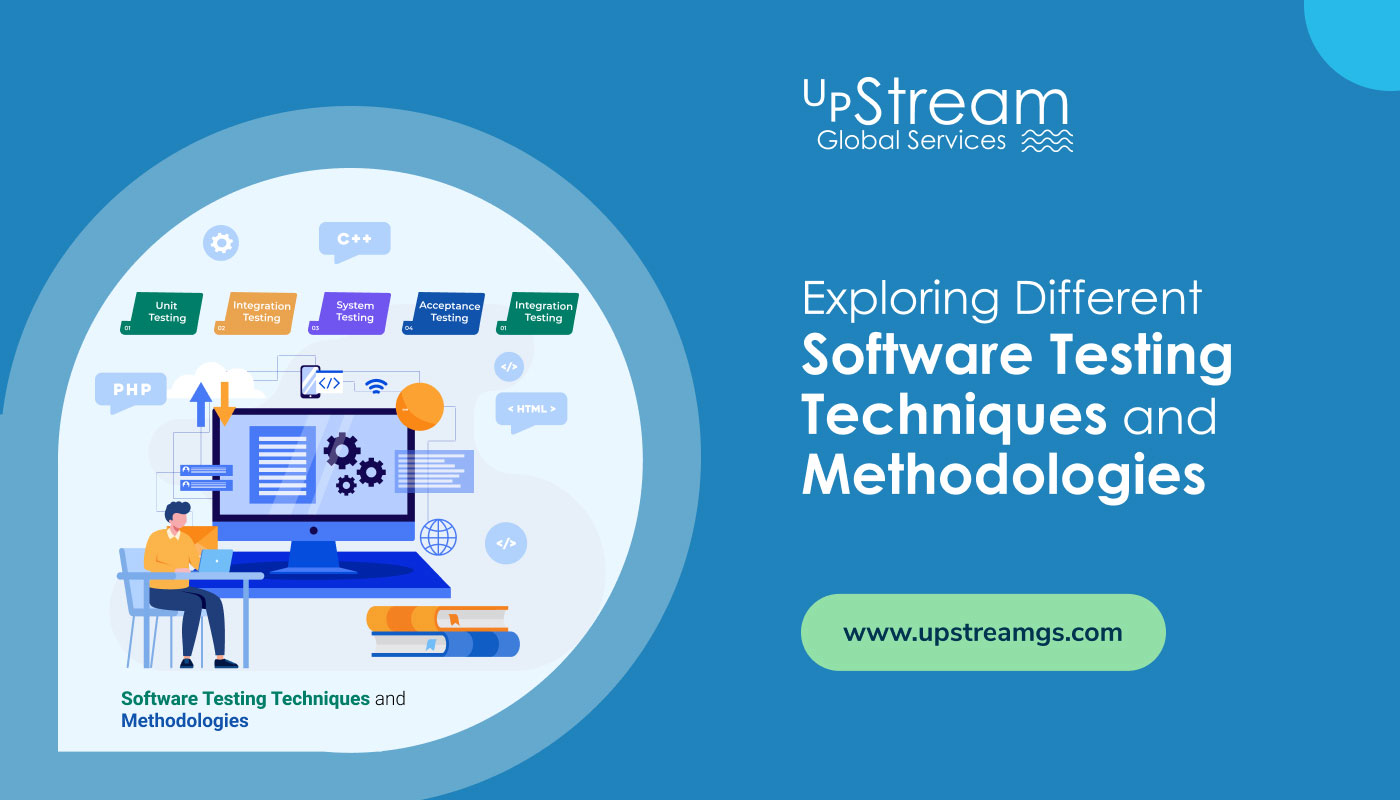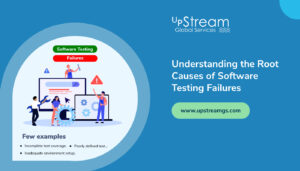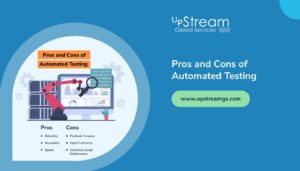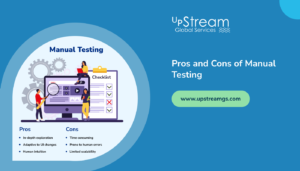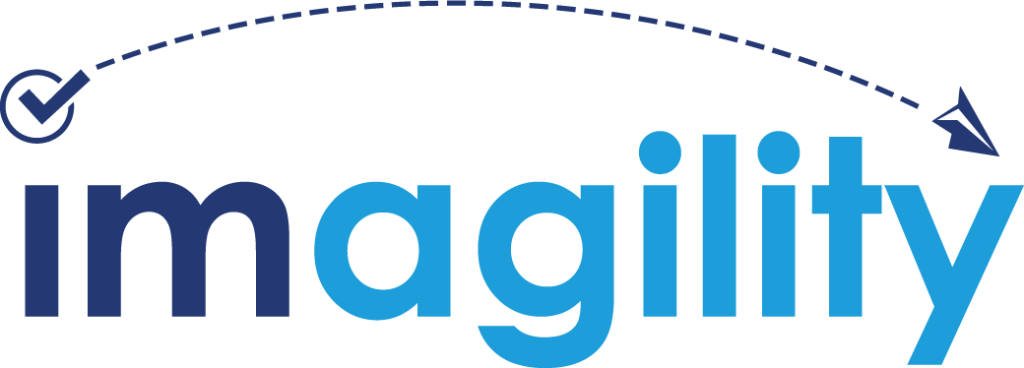Table of Contents
What is Software Testing?
Different Testing Techniques
Different Testing Methodologies
Software Development Models
Conclusion
Software testing plays a pivotal role in identifying defects, verifying functionality, and validating performance, to deliver a seamless user experience. Various testing techniques and methodologies are employed to detect bugs, enhance software quality, and optimize the development process.
In this blog, we will discuss various software testing techniques and methodologies, exploring their significance, application, and best practices. But before we dive into the software testing methods, let’s first understand what software testing is.
What is Software Testing?
Software testing is a systematic process of evaluating software components and systems to identify discrepancies between expected and actual results. It encompasses a broad spectrum of activities, ranging from unit testing and integration testing to system testing, acceptance testing, and more.
Each testing phase aims to uncover defects, validate functionality, and ensure the software meets specified requirements and quality standards. Let’s look at various testing techniques.
Different Testing Techniques
Listed below are some commonly used testing techniques.
- Unit Testing
Unit testing is the first level of software testing performed during the development phase. It focuses on testing individual components or units of the software in isolation to verify their correctness and functionality. Test cases are designed to validate each unit’s behavior, ensuring that it performs as intended and meets the defined specifications.
- Integration Testing
Integration testing involves testing the interactions and interfaces between different software modules or components. It aims to identify defects in the integrated components, validate data flow between units, and ensure seamless communication and collaboration among system elements.
Depending on the project requirements and architecture, integration testing can be conducted using various approaches, such as top-down, bottom-up, and sandwich testing.
- System Testing
System testing evaluates the behavior and performance of the entire software system as a whole. It verifies that the integrated components function correctly in conjunction with the system, meet the defined requirements, and deliver the expected results under various conditions.
System testing encompasses functional testing, performance testing, usability testing, and more, targeting different aspects of the software system.
- Acceptance Testing
Acceptance testing is the final phase of testing performed to validate the software’s readiness for deployment and acceptance by end users. It involves testing the software against business requirements, user expectations, and real-world scenarios to ensure that it meets user needs, performs reliably, and delivers a satisfactory user experience.
Acceptance testing can be conducted by end-users, stakeholders, or quality assurance teams using predefined test cases or exploratory testing techniques.
Different Testing Methodologies
Let’s discuss the following software testing methodologies to understand their characteristics, advantages, and applications in the software development lifecycle:
- Black Box Testing
Black Box Testing, also known as Behavioral Testing or Functional Testing, focuses on testing the software’s functionality without considering its internal structure or code. Testers evaluate the application’s inputs and outputs, functionalities, user interfaces, and usability based on specified requirements and user expectations.
Black Box Testing is performed from an end-user perspective and is particularly effective in identifying logical errors, usability issues, and system-level defects.
- White Box Testing
White Box Testing, also known as Structural Testing or Glass Box Testing, focuses on testing the software’s internal structure, design, and implementation. Testers evaluate the code’s logic, paths, branches, and internal data structures to identify errors, code vulnerabilities, and performance bottlenecks.
White Box Testing requires knowledge of programming languages, algorithms, and software design principles and is typically performed by developers to ensure code quality, reliability, and maintainability.
- Scripted Testing
Scripted Testing involves creating, executing, and maintaining test scripts, test cases, and test scenarios based on predefined requirements, specifications, and user stories. Testers follow scripted steps and procedures to validate software functionality, behavior, and performance against expected outcomes and acceptance criteria.
Scripted Testing can be applied across different testing levels and types, such as functional testing, regression testing, and integration testing, and can be conducted manually or automated using testing tools.
- Exploratory Testing
Exploratory Testing is an ad-hoc testing approach focused on discovering defects, uncovering issues, and evaluating the software’s behavior and performance without predefined test cases. Testers explore the application, execute test scenarios, and learn about its functionality and features in real-time to identify defects, provide feedback, and improve test coverage.
Exploratory Testing encourages creativity, flexibility, and collaboration among testers and is particularly effective in uncovering complex defects and usability issues.
- Manual Testing
Manual Testing involves executing test cases, validating software functionality, and identifying defects manually without using automated testing tools or scripts. Testers interact with the application’s user interface, functionalities, and features to evaluate its behavior, performance, and usability based on specified requirements and test objectives.
Manual Testing requires human intervention, observation, and judgment and is suitable for exploratory, usability, and user acceptance testing.
- Automated Testing
Automated Testing involves using automated testing tools, scripts, and frameworks to execute test cases, validate functionality, and verify software performance automatically. Testers write and maintain automated test scripts based on predefined requirements, specifications, and acceptance criteria and use testing tools to automate test execution, reporting, and defect tracking.
Automated Testing helps accelerate testing cycles, increase test coverage, improve efficiency, and reduce manual effort, human errors, and costs.
Software Development Models
The Waterfall and Agile software development methods have distinct testing styles.
- Waterfall Model
The Waterfall Model is a sequential and linear software development and testing approach that progresses through distinct phases, such as requirements gathering, design, implementation, testing, deployment, and maintenance. Testing is typically performed at the end of each development phase to validate the software’s functionality, performance, and quality before proceeding to the next phase.
The Waterfall Model emphasizes detailed planning, documentation, and sequential progression but may lack flexibility, adaptability, and responsiveness to changes and feedback.
- Agile Methodology
Agile Methodology is an iterative software development and testing approach that promotes collaboration, flexibility, adaptability, and responsiveness to changes and customer feedback. Agile teams work collaboratively in short development cycles, known as sprints, to deliver working software incrementally and iteratively, incorporating feedback, adapting to changes, and continuously improving the product.
Testing is an integral part of the Agile process. Testers work closely with developers, product owners, and stakeholders to ensure quality, reliability, and customer satisfaction throughout the development lifecycle.
Conclusion
Various software testing methodologies, such as Black Box Testing, White Box Testing, Scripted Testing, Exploratory Testing, Manual Testing, Automated Testing, offer different approaches, techniques, and perspectives to evaluate software functionality, behavior, performance, and quality.
By leveraging these testing methods effectively and selecting the appropriate methodology based on project requirements, objectives, and constraints, organizations can identify defects early, validate functionality, optimize performance, enhance usability, and deliver high-quality software solutions that meet user needs, expectations, and business goals.
